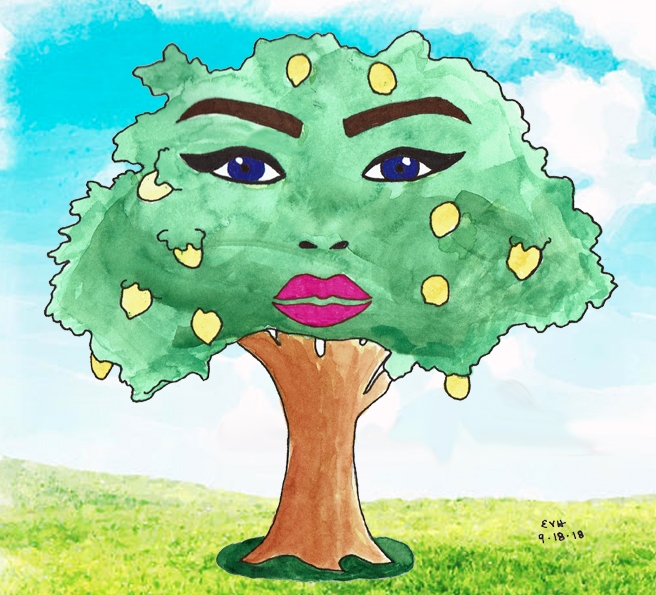
Jataka 85
Kimpakka Jātaka
The Poisonous Fruit
as told by Eric Van Horn
originally translated by Robert Chalmers, B.A., of Oriel College, Oxford University
originally edited by Professor Edward Byles Cowell, Cambridge University
This story is almost identical to Jātaka 54, but in Jātaka 54 the moral is more about listening to a person of wisdom. In this story, the moral is about the dangers inherent in sense desire.
The Buddha’s teachings on sense desire are not very popular. But this is not a teaching about denial. It is about self-indulgence and addiction. Our craving for sense desire is at the heart of our problem. You can still enjoy a beautiful view or good food without craving them when you do not have them. The craving causes suffering.
Ṭhanissaro Bhikkhu tells a story about a European who explored the far northern reaches of Canada. He was traveling with Inuit, who were the only people who could lead such an expedition. He noticed that on days when they could not find food, they made a particular effort to be cheerful. That is a very healthy response to managing sense desire.
“As they who ate.” This story was told by the Master while at Jetavana. It is about a lustful monk. Tradition says there was an heir of a good family who gave his heart to the Buddha’s Dharma and joined the Saṇgha. But one day as he was going on his alms round in Sāvatthi, he was aroused by the sight of a beautifully dressed woman. Being brought by his teachers and directors before the Master, he admitted to the Blessed One that lust had overcome him. Then the Master said, “Truly the lusts of the five senses are sweet in the hour of actual enjoyment, brother. But this enjoyment of them, in that it entails the miseries of rebirth in hell and the other evil states, is like the eating of the fruit of the What-fruit tree. (The What-fruit resembles a mango but is poisonous.) The What-fruit is very pleasant to look at, and it is very fragrant and sweet. But when eaten, it racks the stomach and brings death. In other days, ignorant of its evil nature, a multitude of men, seduced by the beauty, fragrance and sweetness of the fruit, ate it and they died.” So saying, he told this story of the past.
Once upon a time when Brahmadatta was reigning in Benares, the Bodhisatta was born as the leader of a caravan. Once when journeying with 500 carts from east to west, he came to the outskirts of a forest. Assembling his men, he said to them, “In this forest grow trees that bear poisonous fruit. Let no man eat any unfamiliar fruit without first asking me.” When they had passed through the forest, they came at the other end on a What-fruit tree with its boughs bending low with their burden of fruit. In form, smell, and taste, its trunk, boughs, leaves and fruit resembled a mango. Taking the tree, from its misleading appearance, to be a mango, some picked the fruit and ate. But others said, “Let us speak to our leader before we eat.” And these latter, picked the fruit but waited for him to come up. When he came, he ordered them to throw away the fruit they had picked, and had an emetic (a medicine that causes vomiting) administered to those who had already eaten. Of these latter, some recovered, but ones who had been the first to eat, died. The Bodhisatta reached his destination safely, and sold his merchandise at a profit. After that he travelled home again. After a life spent in charity and other good works, he passed away to fare according to his karma.

Figure: The Seductive Fruit Tree
After he told this story, the Master, as Buddha, uttered this stanza:
As they who ate the What-fruit died, so lust,
When ripe, kills one who does not know the pain
It produces hereafter, stooping to lustful deeds.
Having shown that five lusts, which are so sweet in the hour of fruition, end by killing their victims, the Master preached the Four Noble Truths. At the close of this teaching the lustful monk was converted and won the fruit of stream entry. Of the rest of the Buddha’s following some won the first, some the second, and some the third stage of awakening, while others became Arahants.
His lesson ended, the Master identified the birth by saying, “My disciples were the people of the caravan in those days, and I was their leader.”
